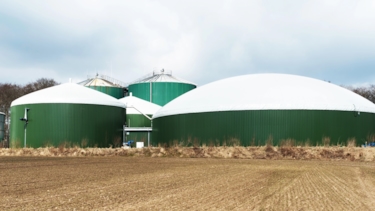Trends and developments in green gas
Green gas is playing an increasingly important role in the Dutch energy transition. The government is actively promoting a mix of renewable energy sources, including wind, solar and green gas. The goal is to produce two billion cubic meters (BCM) of green gas annually in the Netherlands from 2030 onwards. Let’s dive deeper into the trends, developments, and opportunities.
Government policies and subsidies
The energy transition is in full swing and the government is encouraging the growth of green gas with subsidies, including the SDE subsidy (Dutch: Stimulering Duurzame Energieproductie en Klimaattransitie (Stimulation of Sustainable Energy Production and Climate Transition)). While SDE funding is widely used for solar and wind energy, green gas has its own dedicated subsidy budget. This makes green gas production and injection increasingly attractive for businesses.
Legislation and regulations
To ensure the quality and safety of green gas, strict regulations apply:
- Methane reduction and blending obligation
Green gas producers must comply with emission standards and energy suppliers are required to blend green gas into the natural gas grid.
- Ministerial Regulation on Gas Quality (Dutch: Ministeriële regeling gaskwaliteit)
Green gas must meet strict quality requirements and every green gas injector must undergo a quality inspection twice a year by an accredited laboratory, such as Kiwa’s analytical chemistry laboratory. Additional requirements include:
-
- Initial inspection: Before an injector is allowed to supply green gas, a one-time 24-hour measurement must take place. If all criteria are met, injection is approved.
-
- Long-Term monitoring: After the initial inspection, gas is monitored for four weeks, followed by semi-annual analyses.
-
- Monthly odor analysis: A mandatory monthly check on detectability and THT content to ensure the gas has a recognizable smell and is safe for household use.
Trend towards more sustainable feedstocks: silphium and mono-manure digestion
There is increasing focus on sustainable feedstocks for green gas production. In the Netherlands, efforts are being made to avoid using valuable farmland for crops like maize, that are grown solely for fermentation. Alternatives such as silphium (a sunflower-related plant also known as cup plant) are gaining popularity due to their rapid growth and high fermentation potential. Another key development is mono-manure digestion, where green gas is produced almost exclusively from manure, without adding waste wood or organic household waste.
CO₂ reuse innovations
During the upgrading process of green gas, CO₂ is separated from methane. Instead of releasing this CO₂ into the atmosphere, it is increasingly being reused, for example in greenhouses. This contributes to a circular economy and reduces environmental impact.
Opportunities for green gas production
Green gas is evolving rapidly, with regulations and subsidies adapting accordingly. As a result, it is becoming an increasingly important component of the energy transition. It also presents promising opportunities for livestock farmers, waste processors and water authorities to convert waste streams into renewable energy.
Ready to get started with green gas?
Want to learn more about green gas injection? Discover all the details in our step-by-step guide ‘How to start as a green gas injector?’.




